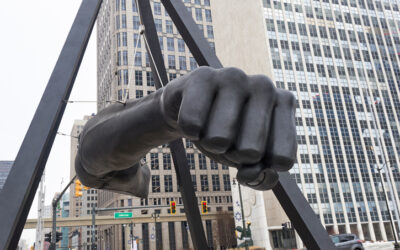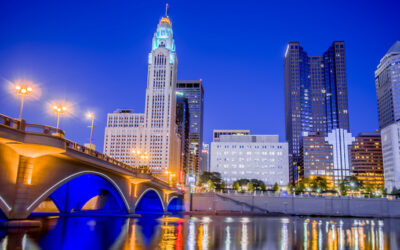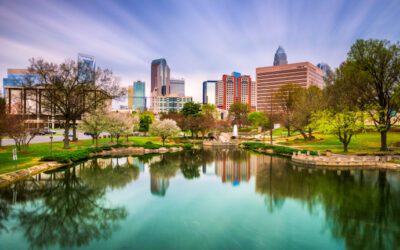Denver has plenty going for it: progressive and innovative thinking; beautiful scenery; a healthy economy with an unemployment rate below 4 percent; many arts, culture and professional sports offerings throughout the year; and, of course, its proximity to many of the world’s best-known ski areas. Don’t forget the weed. We have lot’s and lot’s of weed.
Plus, we have more than 300 days of sunshine a year, so take that Portland!
Still, the Mile High City has problems, just like any other. So here’s why you should think twice before moving here.
1. Traffic sucks, even on weekends.
Traffic on I-70 to the mountains on weekends, whether for skiing in the winter, or hiking and other outdoor pursuits in the summer, is often brutal. Rush hour traffic on I-25 is also soul-crushing.
There are massive traffic tie-ups and slow going on winter Saturdays (heading west to the mountains) and Sundays (returning home). There’s no such thing as leaving too early on Saturday, especially.
On the plus side, a 13-mile shoulder express lane recently was completed on I-70 in an area particularly prone to slowdowns. Also, there are alternatives to driving, such as the Winter Park Ski Train.
On the bright side, when it comes to local travel Denver does have one of the best public transportation systems in the country.
2. Downtown could use some cleaning up.
The 16th Street Mall, which opened in 1982 in the heart of downtown Denver and was designed to be one of the city’s biggest attractions, in recent years the Mall has become a gathering area for panhandlers, people suffering through substance abuse issues, and some people who come just to start fights and commit assault. Public urination? Yeah, that’s an issue too.
Natives and tourists alike have complained about all this. So the city and the Downtown Denver Partnership (DDP), which runs the mall, have taken aggressive action to combat this behavior. The Denver Police Department increased patrols along the mall and the DDP hired a private security force to do the same. The stepped up attention is starting to see results, with Denverite noting a a reduction in “anti-social” behaviors in 2016.
3. Housing is getting more unaffordable.
The cost of living in Denver is 12 percent higher than the rest of the country, and housing is the primary cause coming in at 33 percent higher than the rest of the nation.
Pushed by low inventory, housing costs grew by double figures for three consecutive years. In December 2016, the average cost for a single-family detached home was $434,421, a 5.21 percent jump from 2015; attached condos averaged $308,212, up 11.39 percent year over year. The latter market has slowed considerably because developers fear getting sued for alleged construction defects.
Also, Denver’s vacancy rate is so low that many low-income residents can’t find affordable housing.
That adds to the ranks of the homeless, whose true numbers are unknown. Some came to Denver because of legal marijuana. Others had no financial cushion when they lost jobs. And a certain percentage of them always will resist attempts to help them. Nonetheless, the mayor, City Council, governmental agencies, nonprofit and concerned citizens all have increased their efforts both to build affordable housing and to provide more services for the homeless.
4. You might lose your mind looking for a parking spot.
Some of the new multi-tenant housing omits any parking spaces for residents. A huge influx of millennials into Denver, many of whom eschew owning a car, makes this more acceptable to them. But for everyone else, parking can be difficult to find.
A number of older buildings have been knocked down and replaced with parking lots (and the reverse also is true). Solutions also have included providing more mass transit options (bus, light rail that connects Denver to suburbs and neighboring municipalities) than ever before, and in April, the Regional Transportation District rolled out the “Train to the Plane” light-rail line to connect downtown Denver to Denver International Airport.
Still set on Denver?
If we haven’t scared you off and you are still interested in moving to the Denver metro area…then congratulations! Clearly you are willing to put up with the downsides like the rest of us and therefore must have what it takes to be a real Denverite!
Now you just need to figure out a place to live. Here is a quick neighborhood guide to get you started on your quest for some prime real estate:
Lower Downtown (LoDo)
The unofficial state bird of Colorado is nesting in greater numbers here in #LoDo #Denver #Colorado #CRE #CraneWatch pic.twitter.com/7TlfqsgKjK
— Tim Blair (@TimothyBlair) January 29, 2019
LoDo is full of energy from morning until night. During the day, you’ll see businessmen and women in corporate duds, millennials on their cell phones, tourists sightseeing on the iconic 16th Street Mall, and residents scurrying about running errands. Come nightfall, the many restaurants and bars are in full swing. You might also hear this area called “Ballpark” as it borders Coors Field where the Colorado Rockies play. In case you are wondering, the Bronco’s Mile High Stadium isn’t too far away either.
Lower Highlands (LoHi)
The pedestrian-and-bicycle-friendly Highland Bridge connects downtown with the eastern section of the Highlands neighborhood, known as LoHi. This neighborhood has a blend of exciting, modern architecture mixed with more traditional brownstones and Victorian homes. It has a laid-back, family vibe, some of the city’s best restaurants.
Capitol Hill
https://twitter.com/tommythefamily/status/1099065170268225536
Cap Hill, as locals call it, is located just southeast of downtown Denver’s central business district. It’s a mix of residential homes, quaint bed and breakfasts, and government buildings, including the namesake Colorado State Capitol. It’s also home to many of Denver’s best museums including the Denver Art Museum, Clyfford Still Museum and the History Colorado Center.
Cherry Creek
This is one of Denver’s most beautiful and upscale neighborhoods, with a price tag to show for it–on average homes sell for 1.25 million. It’s best known for the trendy (and expensive) Cherry Creek Shopping Center, boutique stores, and amazing homes. The Cherry Creek Bike Path runs right through the neighborhood, and you’ll find young professionals and families along the trail with kids, dogs and workout gear.
River North (RiNo)
Denver-bound at last, HomeAdvisor plans to move 400 employees to RiNo by early April https://t.co/kuSdS24wJh pic.twitter.com/sn0gp4Vpdf
— Bob Schenk (@bobschenk) March 6, 2019
A few years ago RiNo was filled with dusty warehouses and industrial businesses. Now it’s home to chic art galleries, shops and trendy restaurants. At the heart of it all is The Source, an artisan food hall that has gained national acclaim helping to make Denver one of America’s top food cities. Great Divide Brewing Company also has a taproom in the ‘hood that is not to be missed.
Five Points
Perhaps no other neighborhood in Denver is experiencing gentrification like Five Points. Once known as the “Harlem of the West” because it was a frequent stop for legendary jazz musicians like Louis Armstrong and Billie Holliday, the area is rapidly transforming into a bohemian mecca for funky coffeehouses, street murals, and craft breweries. For now, it’s still a mix of old and new, but it’s morphing fast. Don’t miss the Black American West Museum.
East Colfax
#Denver #RealEstate: East Colfax gets Business Improvement District http://t.co/6EBXJ2gTKY pic.twitter.com/qYgKXLQwRk
— Christopher Gibson (@ChrisRayGibson) December 2, 2014
Playboy once called Colfax Avenue (the longest street in the United States) “the longest, wickedest road in America.” It’s been cleaned up–a lot–but it still has a grimy edge. Classic music venues like Fillmore Auditorium, Ogden Theatre, and Bluebird Theater sit alongside neighborhood anchors like Sie FilmCenter and the Tattered Cover bookstore.
Stapleton
Before DIA, there was Stapleton International Airport. The neighborhood has transformed in recent years into a haven for outdoor lovers and families. In fact, with its plentiful mixed-use buildings, varying home styles, shopping and many recreational activities (think community pools and gardens, miles of trails and more than 50 parks!) residents never have to leave the neighborhood if they don’t want to. Still, it’s just 15 minutes northeast of downtown, so if you want to take advantage of Denver’s culture and nightlife, it’s totally doable.
Washington Park (Wash Park)
https://twitter.com/_dnicolle/status/789303245877293057
The defining feature of Wash Park is its massive namesake green space. At one-mile-long and 161 acres, it’s a haven for residents and tourists alike. An outer gravel jogging path encloses an inner paved path filled with rollerbladers, skateboarders and moms with strollers. Two lakes and two flower gardens (including a replica of George Washington’s Mount Vernon rose garden) are the perfect place to kick back and read a book, or join in a summer volleyball game.
Art District on Santa Fe
This neighborhood’s Latino roots are evidenced by local organizations like Museo de las Americas and Su Teatro Cultural and Performing Arts Center. Today it is one of Colorado’s 12 Creative Districts, and home to Metropolitan State University’s Center for Visual Art as well as the Colorado Ballet. The neighborhood’s First Friday art walks are a Denver institution.


